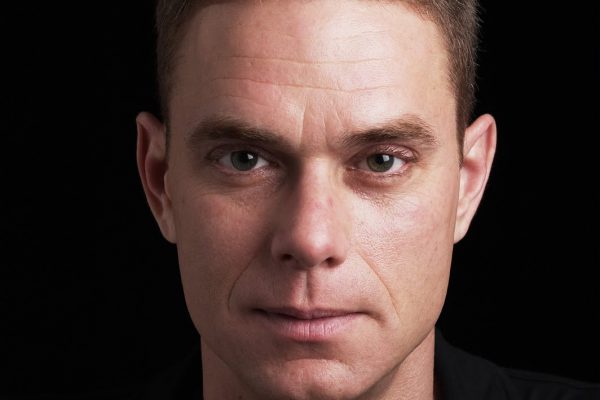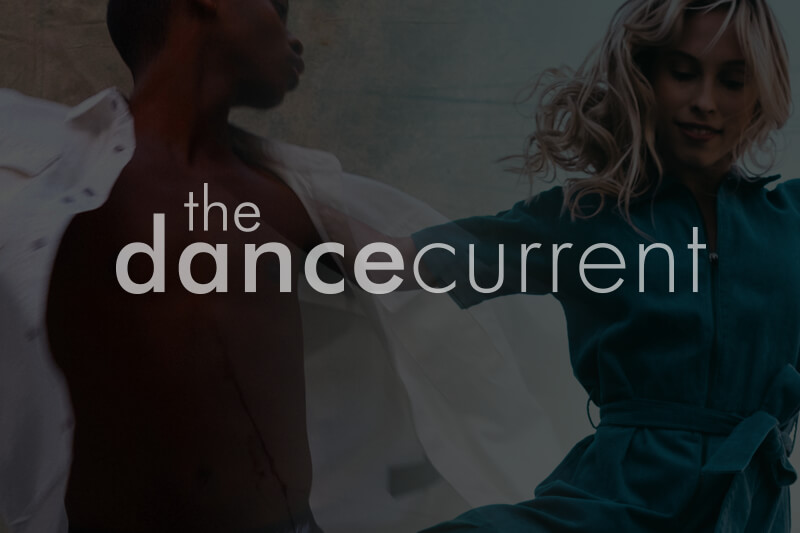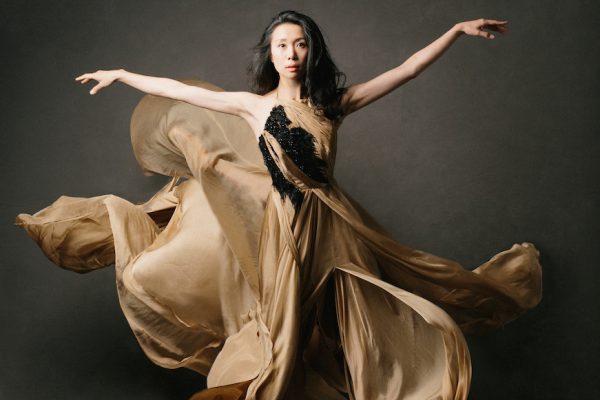The hour-long Dancing in the Third Act was the surprise hit finale at the week-long, inaugural ARTs Unleashed Festival in historic Annapolis Royal – Canada’s oldest, permanent European settlement (1605) – in Nova Scotia. What made the dance show unique was the age range of the twelve performers in The Company of Angels – the youngest is sixty, the oldest, seventy-five.
The artistic director/choreographer of the project is Toronto-based Randy Glynn, sixty-three. He’s a former Danny Grossman Dance Company member (1977-1987), who then established his own successful Randy Glynn Dance Project (1988-1994). Glynn and dancer wife Pamela Grundy (who functioned as rehearsal director for Dancing in the Third Act) also ran, for nearly a decade, the acclaimed Granville Ferry Summer Dance Program. Paula Citron interviewed Glynn for The Dance Current following a successful inaugural run of Dancing in the Third Act.
I thought that Randy Glynn was retired. Now here you are with a new company and a new show. I call myself semi-retired. I do some teaching at performing arts high schools in Toronto, and I’m also a part-time cabinetmaker.
How and when did Nova Scotia become part of your life? I was born in Ottawa, but I went to university at Dalhousie because I had never been east. I studied music and English and took dance class. I fell in love with the Maritimes.
Tell me how did Dancing in the Third Act come about? The backstory is that in 2012, local merchants of the Annapolis Royal farmer’s market asked me to choreograph a flash mob in a parking lot to celebrate the annual Natal Day civic holiday. All the volunteers were seniors. This made me think of Pina Bausch’s Kontakthof. She created the piece on her own company in 1978, but in 2000, she reset it on ordinary men and women who were over sixty-five.
In looking at my flash mob seniors, I remembered how pedestrian movement in theatrical situations, choreographed to coordinated music, could create powerful images. I felt that if I could get these seniors into a theatre, I could make something worthwhile.
Where did the title come from? One of the performers, Grace Butland, suggested Dancing in the Third Act. She got it from a speech by Jane Fonda – Life’s Third Act – that’s on YouTube. Fonda used it to refer to the last three decades of life, now that people today are living thirty-four years longer than previous generations.
What about the company name, Company of Angels? My original idea was to base the show on a book by local folk artist Geoff Butler called The Look of Angels, taken from a series of his paintings. We didn’t do the angel show because the costumes, etc., would have been very costly. Even though the idea switched to a show that would emerge out of the performers themselves, we kept the company name to honour Geoff.
Putting on a show costs money. I spent the winter fundraising. I got the backing of the Annapolis Regional Community Arts Council, and applied for grants from the Canada Council and Nova Scotia’s Department of Cultural Heritage. This total of $27,600 meant that I could put on a show with a professional stage manager, a professional publicist and top-notch rental lighting. The King’s Theatre, which was built in 1922, supports community performances. They were looking for a closer for their ARTs Unleashed Festival, and when we were in place, they gave us rehearsal time in the theatre, which was very helpful. We started rehearsing on June 3. It was a twelve-week project. The dance itself came together very quickly – in about five weeks. We spent the rest of the time polishing the choreography.
How did you find the twelve performers for Dancing in the Third Act? In small towns there are always people who are eager to do interesting new things. In this case, the performers were all people I knew. Five of the couples are husband and wife. It had to be a group who could work well together because we were developing a template for future use.
I watched the video and the show is absolutely charming. The performers look very disciplined. I understand you ran a company class before rehearsal, just like you would for a professional company. We met for three hours, three times a week. I loosely based the class on brain-compatible dance education, or BrainDance, an idea developed in Seattle by Ann Green Gilbert. The emphasis is to encourage thinking and moving as a combined holistic concept. The structure of the class was traditional. We did a warm-up, exercises from the centre, and diagonals. As the classes progressed, the exercises increased in complication. For example, a simple BrainDance exercise is eye tracking, when a dancer’s eyes follow the movement of a hand.
I didn’t put in traditional dance moves. The purpose of the class was not technique training, but creating performance confidence. The exercises were geared to control of the body. The classes were funny, silly and supportive, but the result was that twelve ordinary people were upgraded to look like professional performers.
Can you give the readers a sense of “pedestrian movement” that you used in your show? You lose the effect putting it into words, but here are a couple of examples.
A woman sits in a chair, crosses her legs, and mimes reading a book. A man and a woman come in and sit on either side of her. They annoy her by peering over to see what she’s reading. She gets up and runs with her chair and they follow her, again sitting beside her and looking over at her pretend book. She runs faster and so do they. The sequence keeps repeating as they literally cover the stage. Finally, just as the two interlopers are about to sit down beside her, she flips their chairs over and saunters off in triumph – all this to Chet Atkins music. The vignette is funny because of the surprise element. The two interlopers are left standing there looking dumbfounded.
Another example is when all twelve end up on stage muttering and angry, milling about restlessly. They sweep offstage in a mob. A woman enters, expressing frustration. Then an angry man stalks in. Then two men grasp each other’s arms and tussle like rutting bulls. Each time, the mob re-enters and sweeps them up in its midst. What is lost in the mob is that one woman has collapsed on the floor. When the mob leaves, we see her, rising slowly up on her arms. The people of the mob now return very subdued. A woman cradles the collapsed woman. The men lift her up from the floor and carry her off like pallbearers, one hand on the shoulder of the man in front. Two women are in mourning with their arms wrapped around their bodies. The image of death is very poignant.
People laughed and cried throughout the entire show.
Did working with senior performers create special circumstances? All professional dancers can count and chew gum at the same time. They know how to compensate and recover. Seniors can be forgetful, and have brain farts in the middle of a vignette. I actually never got to see the show. I was backstage in the wings during the performance helping with cues, like counts and props, exits and entrances. Basically, they had to count for themselves, and there were a lot of counts. There were also complex internal cues. I’d help out with a clap, for instance. Over the run, they kept getting better.
Was Dancing in the Third Act a huge success? The King’s Theatre is now very enthusiastic about dance and it’s ninety-nine per cent sure that we’ll be doing something again next year. Four communities have also asked to reset this show, or create a new show using the template. There is also talk of a tour with the original performers. We’re lucky that filmmaker Tim Wilson, who lives in Bear River, became addicted to the project, so there will be a professional documentary about the show.
Was it strictly a local audience? What was so great is that the whole community at large got on board, and we attracted people from Wolfville to Halifax, and places in between. For example, B&B owners sent their guests to see the show. We also had great coverage in the media like the Halifax Chronicle Herald and the CBC, which helped get the word out.
What are your feelings about the show when you look back over the summer? I realize that my illogical and intuitive response to the flash mob – that a strong and powerful piece could be created on these seniors – was proven to be correct. I’m proud of the performers. The idea turned out even better than we thought, and I’m exhilarated about doing more work with them. Even if we had made a terrible piece, it was an experience of a lifetime. We spent a lot of time laughing.
Any personal impact on yourself? When my company, Randy Glynn Dance Project, had its grant money pulled, I felt it was futile to carry on. I put my creative ideas elsewhere, like into the new kind of teaching that we did at our summer school, with one-on-one technique classes, for example. This show has made me enthusiastic about dance again. I’ve got myself back in the game by creating a dance piece on a large scale.
Dancing in the Third Act runs May 20-22, 2015 in the auditorium at Silverthorn Collegiate. Read also this feature from insidetoronto.com.
Tagged: Contemporary, NS





